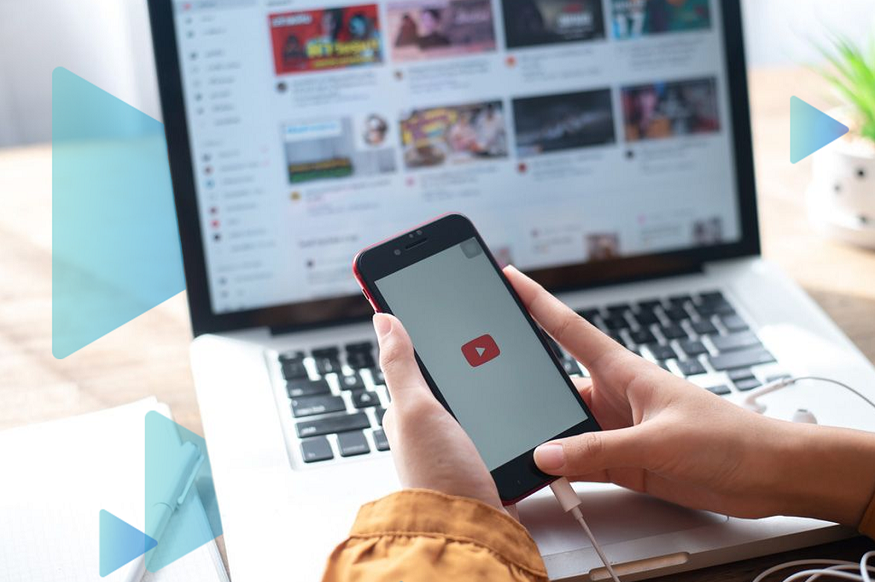If you believe in free will, we have some news that you won’t like… At least when it comes to YouTube. In fact, YouTube’s recommendation algorithm guides 70% of the videos watched on the platform .
Seventy percent! Now that’s influence! YouTube’s 2.5 billion users watch 694,000 minutes of video every minute . And the platform’s recommendation system is responsible for a large portion of those views.
It’s no surprise, then, that marketers, influencers, and content creators are obsessively trying to crack the secrets of the YouTube algorithm. Getting your video recommended to the right people at the right time is the path to YouTube stardom, but how does it work? How does the YouTube algorithm make this decision? And, most importantly, how can you profit from this mysterious formula?
We have the answers to all your existential questions, fellow social media investigators. In this article, we’ll reveal everything you’ve been dying to know about the YouTube algorithm.
What the Algorithm Is (and Isn’t)
The latest changes to the YouTube algorithmPro tips for making YouTube’s search and discovery systems work in your favor
Social Media Tool
Plan. Publish. Interact. Measure. Earn.
30-day free trial
A Brief History of the YouTube Algorithm
What is the YouTube algorithm? To answer this question, let’s take a look at how the YouTube algorithm has evolved over time and how it works today.
2005 – 2011: optimization based on clicks and views
According to YouTube co-founder (and Me at the Zoo star ) Jawed Karim, the platform was launched in 2005 as a way to ask people to get their hands on the video of Janet Jackson and Justin Timberlake’s famous Superbowl performance . It’s no wonder, then, that for many years, YouTube’s algorithm recommended the videos that got the most views and clicks .
Unfortunately, this system has led to the proliferation of misleading titles and thumbnails, commonly known as “clickbait.” The user experience has been degraded by videos that leave viewers wanting more, feeling frustrated, or feeling like they’ve been duped.
2012: optimization based on viewing time
In 2012, YouTube overhauled its recommendation system to take into account the length of time each video was watched , as well as the time spent on the platform in general. When users find videos that are interesting and of good quality, they will (in theory) spend more time watching them.
This consideration of watch time was a game changer. According to Mark Bergen, author of Like, Comment, Subscribe: Inside YouTube’s Chaotic Rise to World Domination , [watch time] had an immediate impact . Early YouTubers were creating short-form videos similar to TikTok, really… but watch time gave rise to gaming vlogs, beauty tutorials, far-right podcasts… all the categories of content we now associate with YouTube.”
Accounts that previously performed exceptionally well (like eHow or MysteryGuitarMan videos) saw an almost instant drop.
This change prompted some creators to shorten their videos to increase the chances that viewers would watch them to the end. Conversely, others lengthened the length of their videos to increase overall watch time. YouTube has never commented on any of these practices and has always stuck to the same advice: create videos that your audience will like and the algorithm will reward you.
That being said, any good Internet user knows that time spent online does not always equate to quality time spent online. So YouTube has changed its approach again.
2015 – 2016: optimization based on satisfaction
In 2015, YouTube began directly measuring viewer satisfaction using surveys and direct response metrics like shares , likes , dislikes , and the dreaded “Not Interested” button.
In 2016, YouTube published a white paper to explain some of the inner workings of its AI: Deep Neural Networks for YouTube Recommendations .
To put it simply, the algorithm became much more personal. The goal was to find the video that would match the desires of each viewer, and not the video that many other people have already watched in the past.
Therefore, in 2018, YouTube’s product director mentioned during a panel that 70% of watch time on YouTube was spent watching videos recommended by the algorithm.
From 2016 to today: dangerous content, demonetization and brand safety
Over the years, as YouTube has grown in size and popularity, so have issues with content moderation. Additionally, the algorithm’s recommendations have become a serious topic not only for content creators and advertisers, but also for media and government organizations.
YouTube has said it takes seriously its responsibility to allow diverse opinions to be expressed while reducing the spread of harmful misinformation . Algorithm changes rolled out in early 2019, for example, reduced consumption of borderline-violating content (i.e., content that doesn’t actually violate the Community Guidelines but is harmful or misleading. However, content that clearly violates the Guidelines is immediately removed ) by 70%.
This problem affects content creators, who worry that they might accidentally break ever-changing rules and be penalized with strikes, demonetization, or worse (in fact, according to former CEO Susan Wojcicki, YouTube’s priority in 2021 was to make its Community Guidelines more transparent for creators).

